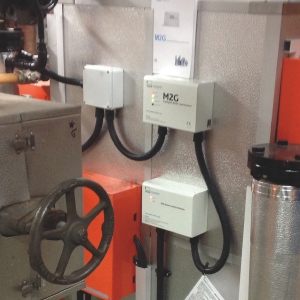Seeing the big picture

Verifying the success of an energy-saving project requires a holistic approach that takes account of all variables, says David Bakst*.
Many organisations that invest in energy efficiency initiatives will want to quantify the savings that have been achieved. There are many possible reasons for this, including evaluation of a particular technology for possible wider use, calculating return on investment, contributing to sustainability reporting - or all of these.
Whatever the reason, the key thing is clearly to ensure that the results are meaningful, and there are many factors that can impact on energy consumption and skew the measurements. These include changes in building usage, other energy-saving initiatives in the same building and weather patterns. So it is vital to isolate the influence of these other factors on the data if any evaluation is going to be meaningful and useful. That means seeing each initiative in the context of the bigger picture.
These principles, which apply to any energy-saving project, are clearly illustrated by Sabien’s approach to measurement and verification when our M2G boiler load optimisation controls are installed.
In these projects it makes sense to compare gas consumption for similar times of year before and after the M2G has been fitted. However, there can be considerable variation between seasons in different years, so it’s important to use the degree day data produced by the Meteorological Office to adjust figures accordingly. Local conditions, such as frost hollows, should also be considered.
Nor is weather the only influence on heating loads. For example, any improvements to the thermal insulation of the building fabric during the same period will reduce heat losses and, therefore, space heating loads. Similarly, increased occupancy levels will raise internal heat gains, again reducing space heating loads. However, higher occupancy can also increase demand for domestic hot water, especially if there are shower facilities for staff.
Conversely, a move to flexible working practices such as hot desking and home working will reduce occupancy levels and internal heat gains and potentially increase space heating requirements. Other variables might include an increase in inbound or outbound goods, leading to higher heat losses through loading bay doors – so a ‘system approach’ should be used to anticipate and identify any such variables.

Another issue, of course, is the accuracy of measurement. Many organisations now use Automatic Meter Reading (AMR) but often this does not break gas consumption down into uses such as heating and catering. So while an increase in occupancy may reduce space heating loads, it may also increase the gas consumed by the cafeteria in producing hot meals.
All of which means that evaluating the success of an energy-saving initiative is more complex than many people first realise. For these reasons, measurement and verification of all Sabien projects is carried out in line with the best practice framework defined by the International Performance Measurement and Verification Protocol (IPMVP). This provides a standardised, transparent approach that ensures all parties are aware of the parameters to be used in evaluating the performance of the project.
*David Bakst is Operations Director with Sabien Technology
Further information from the link below.








